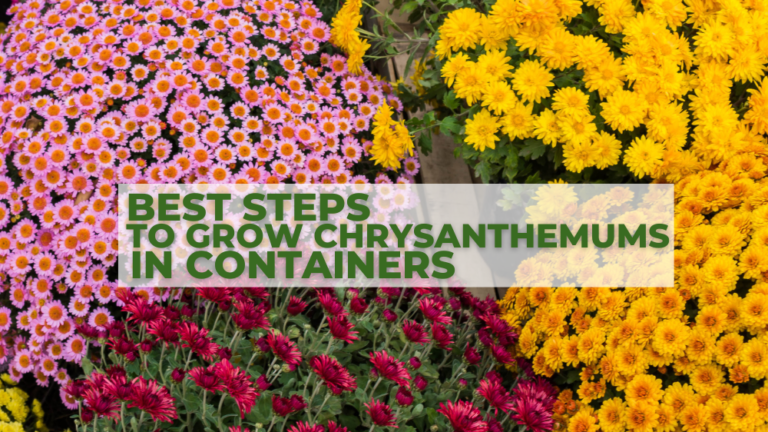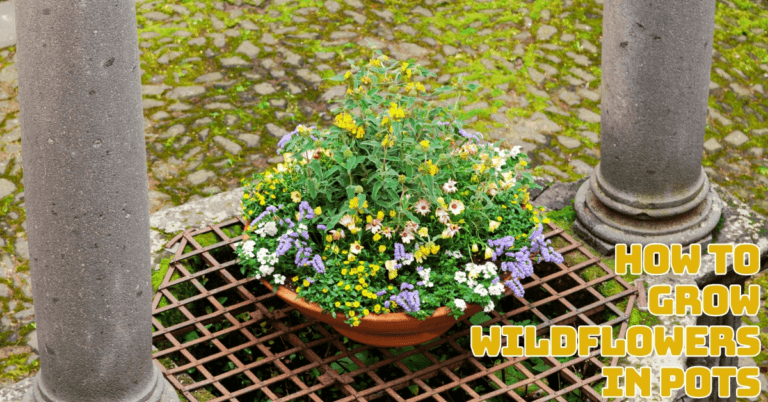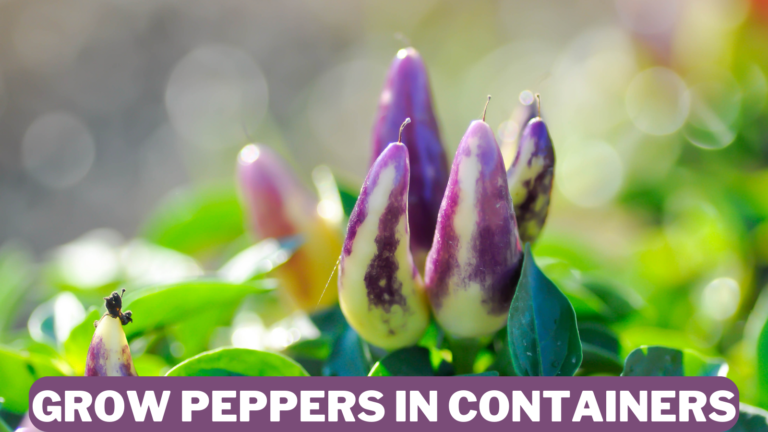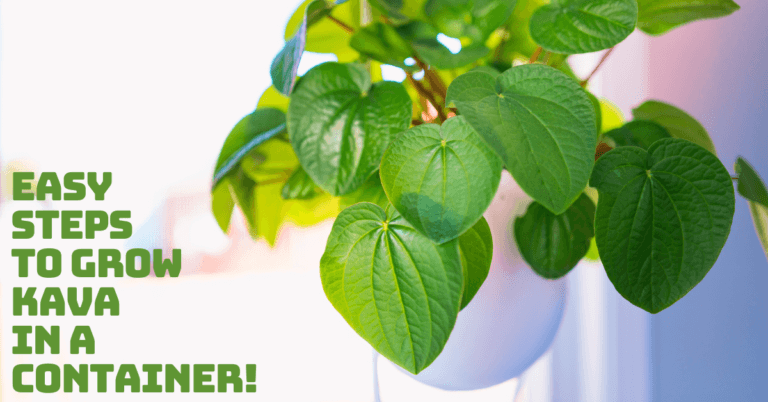Most Important Steps Of Growing Oregano In A Container
Most Important Steps Of Growing Oregano In A Container
Oregano is a perennial plant with rose-purple or white blooms and a thyme-like flavour. Here's how to grow Oregano in a container.
Oregano's spicy and pungent flavour is widely used in Italian recipes. It is a resilient plant that forms an excellent ground cover.
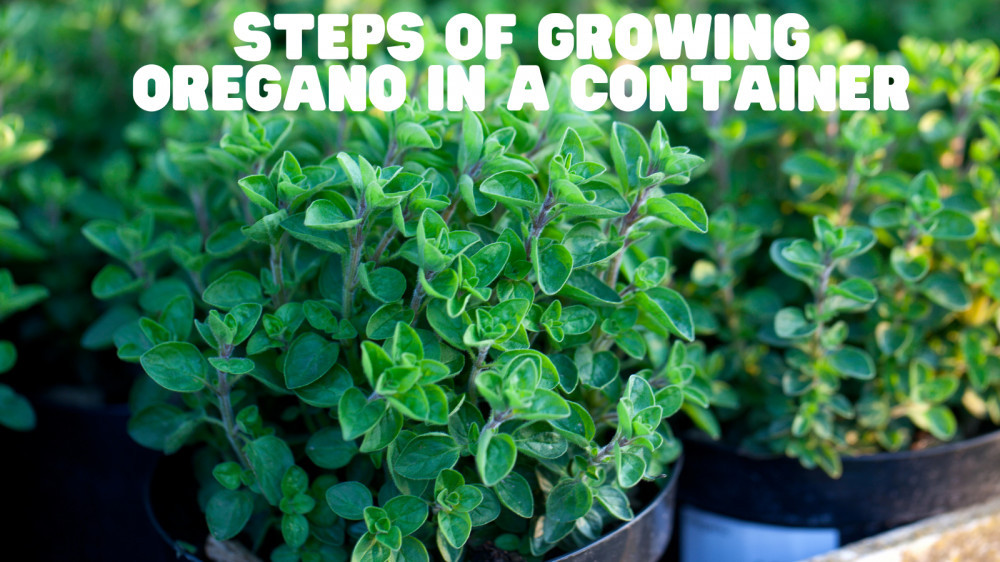
Some Basic Information Of Oregano
Oregano is a perennial plant with rose-purple or white blooms and a thyme-like flavour. Here are some tasty recipes and instructions for cultivating oregano plants in your backyard.
Oregano's spicy and pungent flavour is widely used in Italian recipes. It is a resilient plant that forms an excellent ground cover.
The Oregano plant gets its name from the Greek words “Oros,” which means mountain, and “Ghanos,” which means brilliance—the Luminous Mountain.
Origanum Vulgare is the scientific name for oregano, which belongs to the Lamiaceae family. There are four varieties of oregano, with “Oreganum Vulgare spp. Hirtum” being the most prevalent in Greece.
Although Greek oregano is a vigorous plant with oval and pointed leaves, it also has lovely purple or white flowers that bloom from July to September.
Oregano was a sign of joy and gladness for the Ancient Greeks. In ancient Greece, brides and grooms were often crowned with laurels and oregano. Greek oregano is different from other forms of oregano found in the Mediterranean.
Oregano (Origanum vulgare) is a flowering plant of the Lamiaceae mint family. It originated in the Mediterranean region but has spread throughout the temperate Northern Hemisphere.
Oregano is a woody perennial plant that grows 20–80 cm (8–31 in) tall and has opposite leaves 12–14 cm (12–12+12) long.
The purple flowers are 3–4 mm long (⅛–³∕₁₆ in) and produced in tall spikes throughout the summer.
It's also known as wild marjoram, and its near relative, O. majorana, is referred to as sweet marjoram.
Both are commonly used in cooking, particularly in Greek, Spanish, Italian, Mexican, and French cuisines.
Oregano is also a decorative plant; various varieties include leaf and blossom colours and habits.
Types Of Oregano
You should know about the most popular varieties of Oregano to grow in a container. Here, I’ve added some popular varieties of oregano.
1. Marjoram (Origanum majorana)
Marjoram is a strand that is less mild and peppery than Greek Oregano. Marjoram is a herb that may be used in various cuisines and has numerous health advantages.
2. Syrian Oregano (Origanum syriacum)
This fragile perennial has soft, hairy, tall stems with gray-green oval leaves thickly packed on them.
Unlike the more popular oregano variants, it has a flavour comparable to mint with a subtle spicy edge.
It's popular in Middle Eastern cooking, especially for vegetable and meat dishes, but it may be used in any recipe for oregano.
This plant thrives in dry soil and hot conditions. It is sensitive to humidity and will not tolerate overwatering.
3. Greek Oregano (Origanum vulgare)
This is a type of oregano known as European or Turkish oregano. It is the ‘genuine' oregano to which all others are compared, and it is the type of oregano you are most likely to find in the spice and herb aisles at the supermarket.
The rich flavour of Greek oregano makes it popular in Italian, Spanish, and Greek cooking. It's a common component of pizzas, pasta sauces, soups, and casseroles.
4. Golden Oregano
The name comes from the golden yellow leaves of this common oregano species. It's a clump-forming perennial with small oval leaflets that cover wiry stems.
This plant stays modest, spreading broader than it grows tall, which makes it helpful for covering ground in bare regions in the garden. It is hardy to zone 4 and remains evergreen in warm conditions.
5. Ornamental Oregano (Coleus_amboinicus)
Ornamental oregano is planted for its attractive appearance and enticing fragrance, but despite its aromatic leaves, it is not suited for cooking.
The leaves are edible but don't have the same flavour as other forms of oregano and won't help you cook.
Ornamental oregano comes in various varieties, each with its appearance and climate compatibility.
6. Italian Oregano
As a hybrid of regular oregano and marjoram, this oregano has a milder flavour for cooking. It's a versatile herb that works well in soups, tomato sauces, and other pasta dishes.
The plant reaches a height of two feet and has a similar spread, making it perfect for filling gaps between larger shrubs.
This plant has larger, bright green leaves than common oregano, producing lovely, tiny pink flowers in the summer.
7. Sweet Marjoram
When it comes to cooking, marjoram is considered a different herb from oregano; nevertheless, all forms of marjoram are variations of oregano and members of the oregano family.
The mounding habit of this tiny shrub is native to Turkey. The densely stemmed plant is covered with gray-green oval leaves.
This plant blooms with clusters of little white and pink flowers in the summer, making it particularly appealing.
8. Mexican Bush (Poliomintha longiflora)
Mexican Bush (Poliomintha longiflora) is a hardy plant native to Mexico. This plant, sometimes known as Mexican Sage or Rosemary Mint, thrives in hot, dry climates. It thrives in desert climates like those found in Texas and Arizona.
Fragrant purple flowers give decorative charm in the spring and summer. Mexican Bush plants repel deer, making them a fantastic choice if you want to keep them out of your garden.
Growing Oregano In A Container
Planting herbs in pots is simple, becoming popular among plant enthusiasts. Regarding potted herbs, oregano should be at the top of the list.
Oregano is easy to cultivate and also healthful, aromatic, and wonderful. Because of its aroma, it can be used in any meal.
Like its cousins, this member of the mint family enjoys the warmth and grows best in an incredible region with moderate temperatures. Sowing the seeds in the winter or fall is recommended if you reside in a warmer climate.
1. Choose A Container For Growing Oregano
Oregano can reach a height of two feet and a width of 18 inches. If you plant oregano in a container, make sure it's at least 12 inches in diameter, as oregano grows quickly.
For single herb plantings, pots as little as 10 inches in diameter and larger can be used; for large specimens, many herbs in one pot, or culinary herbs that you want to nurture repeatedly for kitchen use, a minimum of 18 inches in diameter is required.
2. Soil Requirements For Growing Oregano In A Container
Now that you have the container, filling it with dirt is time. These plants prefer well-drained, bright, and dry soil.
They would thrive on sandy loam. Add ⅓ parts compost or aged manure to normal potting soil to add organic matter.
Use any standard potting soil that is well-drained, light, and granular. To increase the organic content, add ⅓ parts compost or aged manure.
Oregano should be planted in light, well-drained soil. Oregano thrives in moderately fertile soil, so no fertilizer or compost is required. Allow your oregano to do its thing, but remember, it can be challenging.
3. Sunlight Requirements
Most oregano types require full sun, which means at least six hours in direct sunlight on most days.
Some types, such as golden oregano, demand a little protection from direct sunshine to keep their leaves from burning.
4. Watering Requirements
Water oregano regularly but not excessively. Between waterings, let the soil dry. Oregano is drought-resistant by nature, making it an ideal indoor plant.
Water sparingly and only when the soil's top layer feels dry. To enjoy fresh sprigs of this delicious herb in your dish for a long time, don't keep it moist like mint and avoid overwatering.
When the earth begins to dry up, water the oregano plants just enough to moisten the top 5 inches of soil.
Don't water oregano during damp weather. Water potted oregano before the soil dries out entirely, and after each watering, remove the gathered water from the drip tray. Water your oregano seedlings every few days, if not every day.
5. Potting And Repotting
Healthy oregano grows swiftly and will quickly fill a pot. If the plant becomes unruly, it's a good idea to prune it back, which should lessen the need for repotting.
In general, avoid repotting indoor herbs (even perennials). Instead, utilize them for a few months and then replace the plant when the first soil starts to show symptoms of weariness, which normally happens after about six months.
When you initially bring oregano home, re-pot it only once, from the nursery container (typically a 4-inch plastic pot) into a 6-inch clay pot.
6. Pruning
About six weeks after planting, use pruning shears to cut the oregano plant's stems back to a height of 2 or 3 inches.
If the oregano plant is regrowing from last year, cut it back six to eight weeks after new growth begins in the spring.
Trimming the roots of your oregano plant every few years will remove dead roots and divide huge plants.
Divide the plants and replant them in separate containers with nutrient-rich potting soil. You should stop cutting your oregano plants in late August or early September.
New growth takes time to mature after pruning, and if you cut your oregano plant too late in the season, new growth won't mature before the first frost.
7. Oregano Propagation
Oregano, like other herbs, is normally cultivated from nursery-raised stock or seeds. Growing oregano from seeds provides a world of possibilities for this wonderful herb, as there are numerous varieties outside the traditional.
Oregano propagates easily from leaf cuttings if you already have a plant. Remove the entire plant's leaves and dangle them in a glass of water until a healthy network of roots forms, then plant it in a pot filled with coarse, well-draining potting mix.
8. Temperature And Humidity
Oregano is a robust plant that can withstand temperatures as low as 50°F and as high as 80°F. Oregano may be sensitive to the dry indoor conditions common in the winter.
Therefore, more humidity may be required. One effective way is to keep the pot moist over the winter by placing it on a pebbled tray.
9. Fertilizing
During the summer growing season, fertilize your chives, oregano, and dill by distributing 1 1/2 ounces of 5-10-5 fertilizer every 5 feet of your herb row. Rinse the herbs right after fertilizing to help the fertilizer nutrients reach the plants' roots.
There's no need to feed your plant during one growing season if you've already put compost or old manure into the soil unless it's not growing well.
If you didn't use compost or the oregano appears in need of fertilization, fertilize it once or twice a month with NPK 5-10-5 or a balanced liquid fertilizer like 10-10-10, diluted half-strength. Organic fertilizers like fish emulsion or compost tea are also options.
10. Harvesting
Oregano harvesting is straightforward! When the stems of oregano are at least four inches tall, it's time to harvest it.
Allow them to develop to about eight inches tall before cutting them back to about two-thirds of their original size. If you cut the oregano too short, don't panic; regular trimming fosters new growth.
Once your oregano plant's stems reach 4 to 5 inches, you can begin harvesting it. For the finest results, harvest oregano just before it blooms.
The plant's essential oil concentration has reached its peak at this moment. At that time, the flavour is robust, intense, and at its apex.
Tip
If you're only going to use the leaves and won't be drying the whole plant, simply grab the stem about ⅔ down the length of the plant and run your fingers down it. All you have to do now is clip the now-leafless stem.
11. Store Dried Oregano
When the leaves have grown brittle, it is time to preserve them. Spread a sheet of wax paper out and arrange your bundles on it.
Then, crumble the plants and pluck out the stems, which may be discarded. Keep your dried oregano in an airtight jar and use it all year.
Mix the wax paper in half and construct a funnel to add the dried oregano to a container. Tap the paper to shake the dried leaves into the funnel, then place one end over the lip of the container.
12. Pests & Diseases Of Oregano
Few pests and diseases affect oregano plants. However, keep a lookout for spider mites and aphids on the foliage.
Look for root rot and other fungal diseases that can develop in damp soils. Correcting the oregano plant's growth circumstances can frequently help resolve minor insect and disease difficulties.
Health Benefits Of Oregano
Many cuisines around the world use oregano as a common ingredient. It has a robust flavour and adds mild sweetness to recipes.
Fresh, dried, or as an oil, it provides considerable health advantages in all three forms.
Oregano is a nutrient-dense herb that is normally used in tiny amounts. One teaspoon of dried oregano provides approximately 8% of your daily vitamin K requirements.
Studies have discovered its potential benefits, including fighting microorganisms and lowering inflammation.
1. Rich In Antioxidants
Oregano is high in antioxidants, which protect the body from free radical damage. Free radical accumulation has been linked to chronic diseases such as cancer and heart disease.
Oregano and oregano oil are highly antioxidants in several test-tube tests. Carvacrol and thymol, two antioxidants in essential oregano oil, can help prevent cell damage caused by free radicals.
Oregano can deliver potent antioxidants that help you feel better when combined with other high-antioxidant meals like fruits and vegetables.
2. May Help Fight Bacteria
Certain chemicals in oregano have powerful antimicrobial effects. In one test-tube investigation, essential oregano oil inhibited the growth of E. coli and Pseudomonas aeruginosa, two bacterium species that can cause infection.
Oregano was proven effective against 23 different bacteria species in a test-tube research study.
3. Could Have Anti-Cancer Properties
Oregano is abounding in antioxidants. These chemicals can potentially help prevent cancer and counteract free radical damage. Oregano and its constituents have been demonstrated to help kill cancer cells in test tubes.
In one test-tube investigation, oregano extract was used to treat human colon cancer cells, and it was discovered that it slowed their growth and helped them die.
Another test-tube study found that carvacrol, one of the components in oregano, inhibited colon cancer cell growth and spread.
However, remember that these were test-tube trials involving large doses of the herb and its components. To evaluate its effects, human studies with usual doses are required.
4. Oregano Is Easy To Add To Your Diet
Oregano is a versatile herb that may be utilized in various ways, including in pizza and pasta recipes.
To make a nutrient-dense salad, toss whole oregano leaves with other greens or sprinkle the leaves over chilli, soups, and stews.
It can also be used to make fresh pesto or salad dressing, season meats, and enhance the flavour of homemade sauces.
Oregano is easy to incorporate into your diet because it can be found fresh, dried, or as an oil.
5. Oregano Could Decrease Inflammation
Inflammation is a natural immunological reaction to illness or injury. Chronic inflammation, on the other hand, chronic inflammation is thought to play a role in the development of diseases such as heart disease, diabetes, and autoimmune disorders.
Antioxidants in oregano can assist in neutralizing free radicals and reduce inflammation. It also contains chemicals demonstrated to have anti-inflammatory activities, such as carvacrol. In one animal study, Carvacrol reduced edema in mice's paws by up to 57 percent.
6. Oregano Helps Reduce Viral Infection
In several test-tube investigations, Oregano and its components have been reported to protect against viruses and kill bacteria.
Oregano contains antiviral chemicals such as carvacrol and thymol. In one test-tube trial within one hour of treatment, Carvacrol inactivated norovirus, which causes diarrhea, nausea, and stomach pain.
According to another test-tube study, Thymol and carvacrol inactivated 90 percent of the herpes simplex virus in just one hour.
While these findings are encouraging, more research is required into the effects of oregano on viral infections in humans.
Oregano is a medicinal herb with a long list of health advantages. It is an antioxidant that may help fight bacteria and viruses, slow cancer cell growth, and reduce inflammation.
Current research, on the other hand, is limited to test-tube and animal investigations. More research is required to determine its possible effects on humans.
Fortunately, oregano is adaptable, easy to incorporate into your diet, and may be used in various recipes in fresh, dried, or oil form.
Conclusion
Oregano is a key ingredient in the Mediterranean diet. It adds flavour to your foods but offers several health advantages I’ve shared above.
Don’t miss adding the herb to your small garden. Feel free to comment here if you need help growing oregano in a container. You can also read my blog post on the 7 Popular Vegan Recipes Using Oregano.
I trust you enjoyed this article on the Most Important Steps Of Growing Oregano In A Container. Please stay tuned for more blog posts soon. Take care!
JeannetteZ
>>>Please click here to read my all-inclusive article about Container Gardening<<<
>>>Are you interested in homegrown herbs and medicine? Please click here to find out more about it!<<<
Your Opinion Is Important To Me
Do you have thoughts, ideas, or questions? I would love to hear from you. Please leave me your questions, experiences, and remarks about this article on the Most Important Steps Of Growing Oregano In A Container in the comments section below. You can also reach me by email at Jeannette@Close-To-Nature.org.
Disclosure
This post may contain affiliate links. I earn from qualifying purchases as an Amazon Associate and other affiliate programs. Please read my full affiliate disclosure.
You might also enjoy these blog posts:
Easy Steps Of Growing Basil In A Container
Perfect Tips Of Growing Rosemary In A Container
Best Tips For Growing Rhubarb In Containers
Easy Steps Of Growing Mint In A Container
Best Tips To Growing Herbs In Containers
















